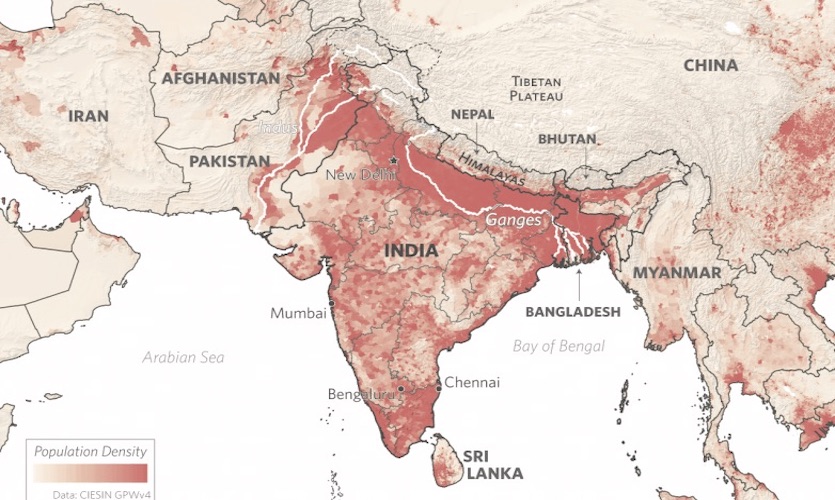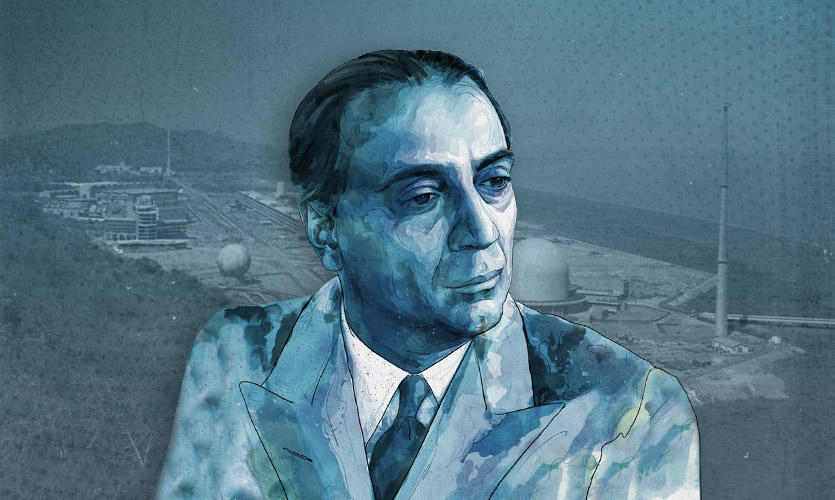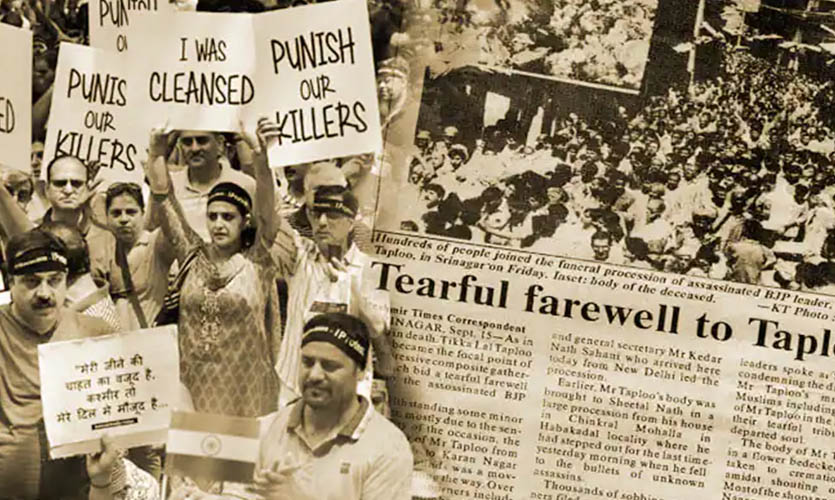Sri Lanka has been going through the worst economic crisis in its history, experiencing shortages of essentials, and violent protests. India, as part of its ‘Neighbourhood First’ policy has been at the forefront of the efforts to help the island nation out of the crisis. Given the exponential inflation in our country, like most others after COVID, why does it still make sense for India to help Sri Lanka out?
Assistance To Sri Lanka
India has been helping Sri Lanka with necessities such as food supplies and medicines, and fuel, the rates of which have skyrocketed in the 22 million people strong island nation. As of May 23, the price of one litre of diesel in Sri Lanka is 289 LKR (Sri Lanka Rupee), after jumping from 121 LKR on January 31. Rice in the country costs US$ 1.24, i.e. 448 LKR per kg, as updated in March 2022. To put this in perspective, the average price of one kg of rice in India is US$ 0.68, i.e. Rs 52.77, and the per litre price of diesel ranges from Rs 84.26 to Rs 97.28, across cities.
The lack of foreign currency in Sri Lanka has halted its ability to pay for necessities such as food, medicines and fuel. India has extended billions of dollars in aid and has also appealed to the International Monetary Fund (IMF) to provide financial assistance to Sri Lanka. Last month, Finance Minister Nirmala Sitharaman met with IMF chief Kristalina Georgieva on the sidelines of the IMF-World Bank spring meeting in the US, to urge her for the same. India has already extended two credit lines worth US$ 2 billion to help the country buy essentials. It supplied 40,000 tonnes of fuel to the country as of April 21, and could reportedly donate another US$ 500 million to help it buy more. “In keeping with our Neighbourhood First policy, India has extended this year alone support worth over US$ 3.5 billion to the people of Sri Lanka for helping them overcome their current difficulties. In addition, the people of India have provided assistance for mitigating the shortages of essential items such as food, medicine etc,” informed India’s Ministry of External Affairs spokesperson Arindam Bagchi.
But India has been sure to maintain a safe distance. After Sri Lanka’s rapidly failing economy forced the prime minister, Mahinda Rajapaksa, to resign, violent clashes broke out in the country. The Sri Lankan military was mobilised to rescue the former PM and his family as protesters gathered outside his home in vast numbers and allegedly stormed it. Following these incidents, rumours started circulating online that India was heeding Sri Lankan politicians. “High Commission has recently noticed rumours circulating in sections of media and social media that certain political persons and their families have fled to India. These are fake and blatantly false reports, devoid of any truth or substance. The High Commission strongly denies them,” read a statement released by the Indian High Commission. India has also pledged its support to the “people of Sri Lanka”, and has distanced itself from any political inclinations in the country. “As a close neighbour of Sri Lanka, with historical ties, India is fully supportive of its democracy, stability and economic recovery. India will always be guided by the best interests of the people of Sri Lanka expressed through democratic processes,” said Bagchi.
Selective Export To Bangladesh and Afghanistan
Due to the reduced output of wheat because of severe heat waves across India, local prices have increased. India has instilled a limit on wheat export to ensure its overall food security, which has been condemned globally.
“I do have an appreciation for the fact that India needs to feed nearly 1.35 billion people and I do have an appreciation for the heatwave that has reduced agricultural productivity, but I would beg India to reconsider as soon as possible because the more countries step into export restrictions, the more others would be tempted to do so and we would end up as a global community less equipped to deal with the crisis,” said IMF chief Georgieva, during the World Economic Forum, earlier this week. “Wheat is one of the areas where Ukraine and Russia have been dramatically impacted by the war so depending on how much India can export and where it directs its exports, it could have a significant impact, especially if exports go to the countries most severely impacted like Egypt or Lebanon where what we see is not only risk of hunger but the risk of social unrest and impact on global stability,” she added. The organisation has omitted to highlight the so-called world leaders’ failure to successfully resolve the Russia-Ukraine conflict, which has taken away a quarter of the global wheat supply. In contrast, India is responsible for only 0.47 percent of the global wheat supply. The IMF chief has failed to consider that the Indian government has assured to fulfil prior commitments, including those made by private trade through Letters of Credit, and to those in need.
A consignment of 61,500 metric tonnes (MT) of Indian wheat was confirmed to have been cleared for Egypt, setting sail from the Kandla port last Friday. India has also been at the forefront in providing aid and assistance to Afghanistan, to help overcome the humanitarian crisis it faces. It has already supplied the country with 8000 MT of wheat, out of the 50,000 MT promised. It has also set aside an amount of Rs 200 crores in development assistance for Afghanistan. This is in addition to the Rs 300 crores earmarked for Bangladesh. The Indian High Commission in Dhaka has clarified that the ban only applies to the commercial export of wheat, and is not for neighbouring countries that require it to ensure domestic food security. Bangladesh plans on importing 10 lakh tonnes of wheat from India. The request is under the Government of India’s consideration, reassuring its commitment to ensuring the overall food security in the region.
India is also considering special requests made by Oman, South Korea, the United Arab Emirates, and Yemen, although it is yet to take a call on the quantities that would be dispatched. Notably, Argentina, Australia, Canada, France, Russia, Ukraine, and the US make up the largest share of wheat export in the world.
Why Neighbourhood First?
As a result of putting its own and its geographical neighbourhood’s interests first, India is gaining goodwill during a time of increasing geopolitical unrest. While India’s relationship with Pakistan continues to be unstable, with Kashmir still a pricking point of contention, the Chinese side remains unpredictable given its volatile reactions. Earlier this week, while the Quad Summit was in progress in Tokyo, Chinese and Russian warplanes threatened Japanese airspace. “On May 24, both countries’ air forces organised and carried out a routine joint strategic mid-air patrol in the airspace above the Sea of Japan, East China Sea and Western Pacific maritime areas,” read a statement by the Chinese defence ministry. The events were especially concerning since Prime Minister Narendra Modi, US President Joe Biden, and new Australian PM Anthony Albanese were in Tokyo to meet Japanese Pm Fumio Kishida for the second in-person Quad Summit, and the launch of the Indo-Pacific Economic Framework (IPEF).
“Facts will prove that the so-called ‘Indo-Pacific strategy’ is essentially a strategy for creating divisions, a strategy for inciting confrontation, and a strategy for destroying peace,” said Chinese Foreign Minister Wang Yi regarding the initiative, after reportedly meeting with Pakistani Foreign Minister Bilawal Bhutto Zardari. Yi’s comments stressing that the strategy is “doomed to fail” were mainly aimed at the US, especially since it has indicated that it might be willing to include Taiwan in the IPEF. President Biden has also stated that the US would get involved militarily if Beijing tries to take Taiwan by force, following which, China’s People Liberation Army (PLA) conducted large scale military drills around the island nation on May 25. Given the US’ track record in Afghanistan and Ukraine, taking the country’s word for it does not seem like a smart decision.
While India must maintain its allyship with the US and other Western countries, its decision to not take sides has substantially safeguarded the country. Although it has refused to stand for or against Russia during the ongoing conflict in Europe, the Kremlin views India’s decision to abstain as the country’s support, continuing the friendly relations between the two. Although India’s defence requirements provide enough reason for it to maintain its friendship with Russia, China’s relationship with the Kremlin is in addition.
China also holds substantial power over Pakistan and Sri Lanka. Pakistan is a lost cause since it owes monstrous debts to the IMF and China, as a result of which it had to hand over control of the strategically crucial Gwadar Port. The port in the Balochistan province gives Beijing access to the Arabian Sea, under the Belt and Road Initiative’s China-Pakistan Economic Corridor (CPEC) project. Pakistan also seems to be going the Sri Lanka way economically, with a categorically exponential rise in its fuel prices overnight. This, in addition to the porous borders India shares with Pakistan and the rise in Khalistan-related terrorist activities in Punjab recently, has increased tensions in the country. China has also assured a substantial amount to Sri Lanka in aid, which is why India needs to do the same or more. Sri Lanka and India have had friendly relations historically, although they have not been without their problems, especially after the assassination of former Indian prime minister Rajiv Gandhi. It is important to ensure strategic coherence with Sri Lanka given India’s geographic proximity and the island nation’s presence in the Indian Ocean.
India’s continued aid and assistance to Afghanistan and Bangladesh, no matter the problematic circumstances in the two countries, has a chance to be remembered by the people of respective countries, and successive governments. In the case of Myanmar, although the military junta may not be bothered, India’s unquestioned support of the people and refusal to take sides has aided it in maintaining peaceful border situations.
While the Indian opposition continues to question the Indian government’s stances or lack thereof, the country must persist to secure its borders and the Indian people. India has US$ 600 billion in foreign reserves, at a time when the world’s most developed nations are also facing increased inflation, and are on the brink of recession. If recent affairs are any indication, India needs to be atma nirbhar in securing and defending itself since some others depend on the country for their survival, and some others can’t be depended on.
The Horus Eye is a weekly column written by Divya Bhan analysing current affairs and policies. This column does not intend or aim to promote any ideology and does not reflect the official position of The Sparrow.
Also read: Can The AAP Successfully Present An Alternative To India’s Aam Aadmi?
Also read: The Rising Wave Of Communal Riots In India Does Not Seem To Have A Trough










